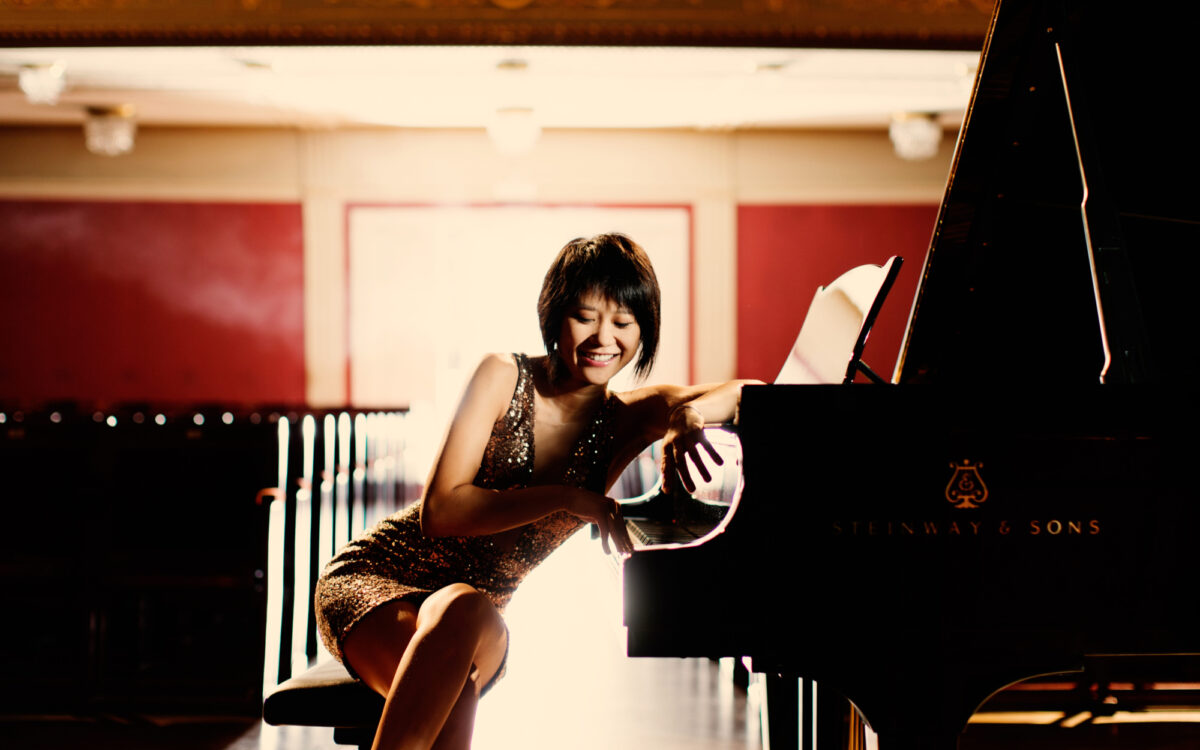Harlem (A Tone Parallel to Harlem), orchestrated by Luther Henderson and Maurice Peress
Ellington wrote Harlem, alternately titled A Tone Parallel to Harlem, in 1950; it was first performed in a jazz-band version at the Metropolitan Opera House in January 1951. Luther Henderson’s orchestration was premiered by the Symphony of the Air under Don Gillis’s direction at Carnegie Hall on March 16, 1955. First BSO/Tanglewood performances: The BSO, under Seiji Ozawa’s direction, first performed Harlem in an arrangement by Wynton Marsalis with the Lincoln Center Jazz Orchestra at Tanglewood on July 24, 1999.
Duke Ellington had already begun to push the structural and expressive limitations of blues and song by the end of the 1920s, when his orchestra was the house band of the exclusive Cotton Club. The club’s all-white patronage expected not only dance numbers but also music to fill an entire evening: transitional numbers, theatrical revues, overtures, and illustrative effects such as the evocative faux-African “jungle style” that Ellington, in the U.S. anyway, helped invent. Along with such songlike hits as Mood Indigo were more extended numbers, including the seven-minute, multipart Creole Rhapsody (1931) and Diminuendo and Crescendo in Blue (1937), made possible by Ellington’s exploratory harmonic language and the flexibility and creativity of his players, who included the great saxophonist Johnny Hodges and later the composer, arranger, and pianist Billy Strayhorn. Ellington and his band had begun appearing in films beginning in 1929, and in 1935 they produced the imaginative, through-composed ten-minute score for the film Symphony in Black: A Rhapsody of Negro Life. The band toured the U.S. and Europe, capitalizing on the worldwide fame of their recordings.
A measure of the public’s increasing awareness of the sophistication of jazz and its proponents was Benny Goodman’s famous 1938 concert at Carnegie Hall. Duke Ellington and his orchestra began a series of Carnegie Hall concerts in 1943, creating new, ambitious pieces commensurate with the venue, including the forty-five minute, six-part Black, Brown, and Beige, among the largest of Ellington’s conceptions. Although the history is a little vague, it seems Ellington wrote Harlem for the NBC Symphony to be included in a longer suite on the subject of New York City, which project apparently fell through. According to Ellington’s memoir, he composed it during a sea voyage from Europe to the United States in summer 1950. The piece was first performed in jazz-ensemble guise in January 1951 at the Metropolitan Opera House for an NAACP benefit. The first performance of an orchestral version took place in June 1951 at City College’s Lewisohn Stadium, with the composer conducting an orchestra made up mostly of NBC Orchestra musicians for a concert benefitting the Damon Runyon Memorial Fund for Cancer Research. Ellington and his orchestra recorded the fifteen-minute piece—with the title A Tone Parallel to Harlem (Harlem Suite) for the Columbia album Ellington Uptown on December 7, 1951. The orchestration used in the present performance is by the formidable, Kansas City-born, Harlem-raised Luther Henderson, a musical polymath who worked with such diverse luminaries as Richard Rodgers, Victor Borge, and Liza Minelli. His orchestral versions of Ellington’s music are considered the gold standard. This Henderson arrangement was premiered by the Symphony of the Air led by Don Gillis on March 16, 1955, at Carnegie Hall.
The phrase “tone parallel” as Ellington coined it is used similarly to the way the term “tone poem” is used in general music history: the musical experience parallels the subject that Ellington is depicting. A Tone Parallel to Harlem is, then, a musical reflection of Harlem. Harlem’s varied, well-defined sections are evocations of encounters within New York City’s vibrant northern neighborhoods. The first utterance from the solo trumpet, using a plumber’s or plunger mute, evokes the word “Harlem.” In his memoir Music Is My Mistress, the composer wrote of the piece, “It is Sunday morning. We are strolling from 110th Street up Seventh Avenue, heading north through the Spanish and West Indian neighborhood towards the 125th Street business area.... You may hear a parade go by, or a funeral, or you may recognize the passage of those who are making Civil Rights demands…. Harlem has its heroes, too…. Jackie Robinson, Ray Robinson, Chief Justice Thurgood Marshall, Countee Cullen, Langston Hughes, Bill Robinson.” In the introduction to his band’s performance of Harlem at the Armory in Washington, D.C., in April 1955, he told the audience, “[We] plan to picture some of the major ingredients of Harlem—a little sadness, a little gladness...a lot of very handsome people who live in Harlem, endowed with great advantages…. We’re bordered on the west by the Hudson River, on the east by the East River, on the south by the Rumba Belt, and on the north by the New York Giants.... We find ourselves, along about halfway through this piece, in front of a church on Easter Sunday morning, witnessing an Easter parade, a little sadness, a little gladness, a dazzling satin doll, but moving on progressively.”
Composer and writer Robert Kirzinger is the Boston Symphony Orchestra’s Director of Program Publications.

